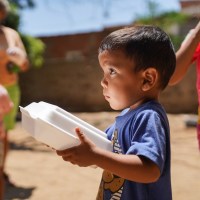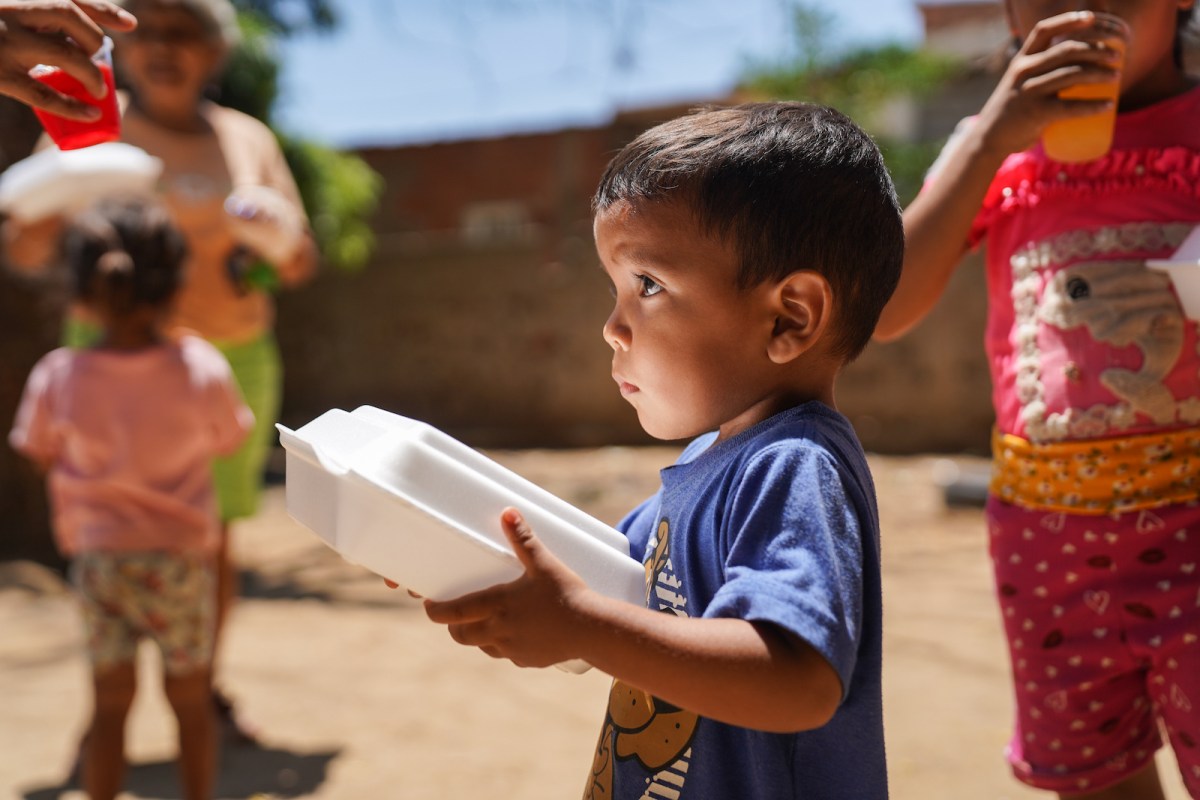In the heat, you can hardly blame the kids for sticking to the shade. They make a tidy line until the food comes, one behind the next, stretching from the shade of a tree, along a sheet metal fence, to the concrete wall at the end. There is excited chatter, of course. With this many kids, there is bound to be chatter. But this is not the raucous gathering you might expect. This gathering is deadly serious.
These kids are hungry. The kind of hungry that accumulates over years, that gnaws at your bones and brain. Some of these kids have eaten a little today. Some ate a little yesterday. It wasn’t enough to quell the hunger though. They’re lined up now because some women in the neighborhood have gathered a little food to make sandwiches for the kids. The women do this whenever they can find enough food to make a small meal for the children. They see the need all around them, and with the little they have, they do what they can.
We learned about these kids and their hunger through a medical clinic we run in the area. Medical clinics are a fantastic way to find out the deepest needs of any community. And in this neighborhood, our doctors told us, far too many kids show the signs of serious malnutrition.
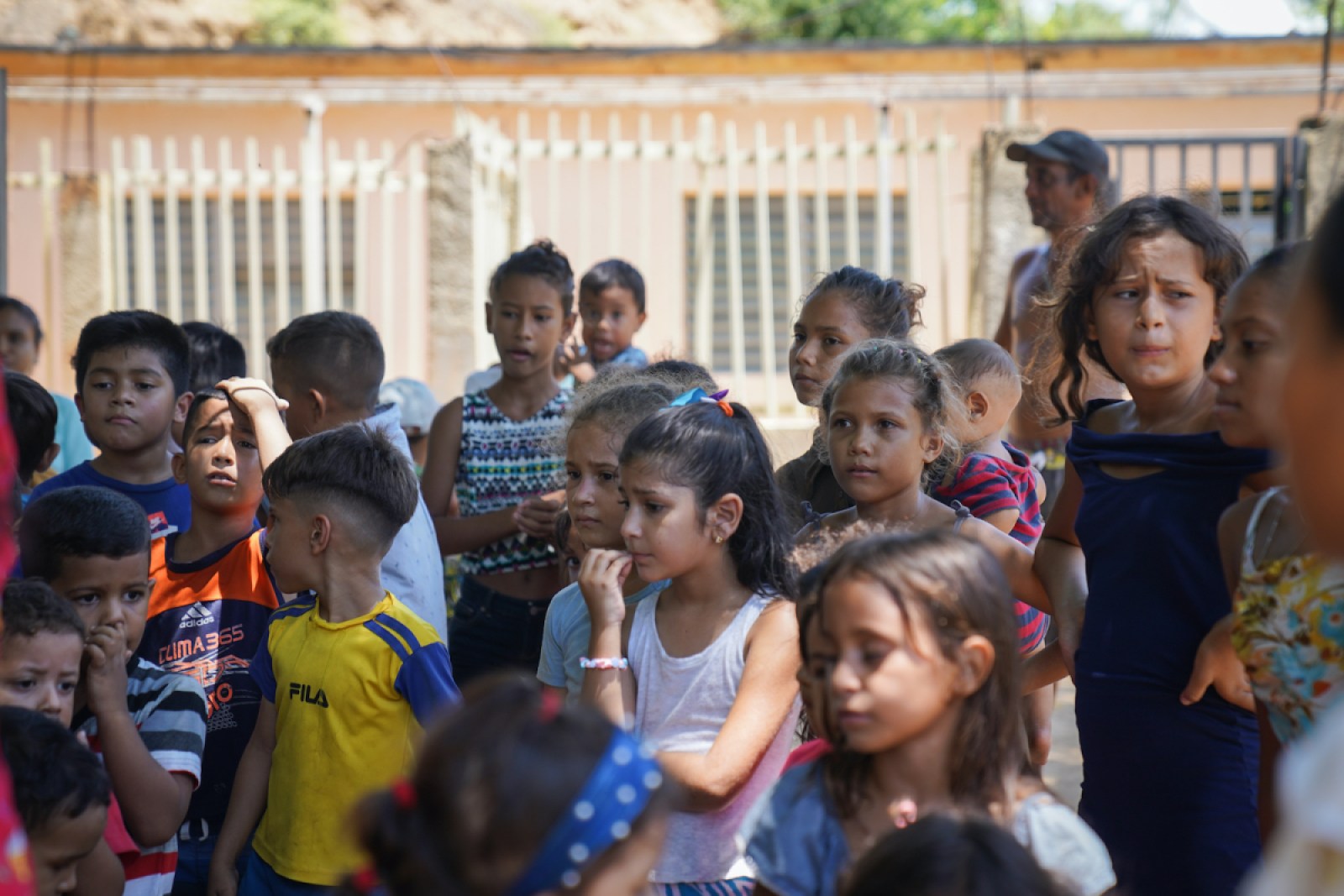
The Impact of Hunger on Venezuelan Kids
95% of the population of Venezuela is living in poverty. 77% live in extreme poverty. What does that look like in terms of day-to-day life? 82% of the families here are exposed to unsafe water and there’s a 74% reduction in electricity and shortages in cooking fuel. Together this means that families can’t boil water to make it safe, and they can’t keep food cold—what little there is to eat and drink often makes them sick.
More than 30% of the children who live here suffer from malnutrition, half of those in acute malnutrition. That means that 1 out of every 3 children suffers from delays in their growth and in the normal development of their brains.
30% of the people who will one day be the adults who make the country run, who will look for work to feed families of their own, will be at a serious, alarming disadvantage.
This isn’t what our doctors want for these kids. It’s not what their parents or neighbors want for them. It’s not what we want, you and me. We want these children to grow up to be healthy and happy.
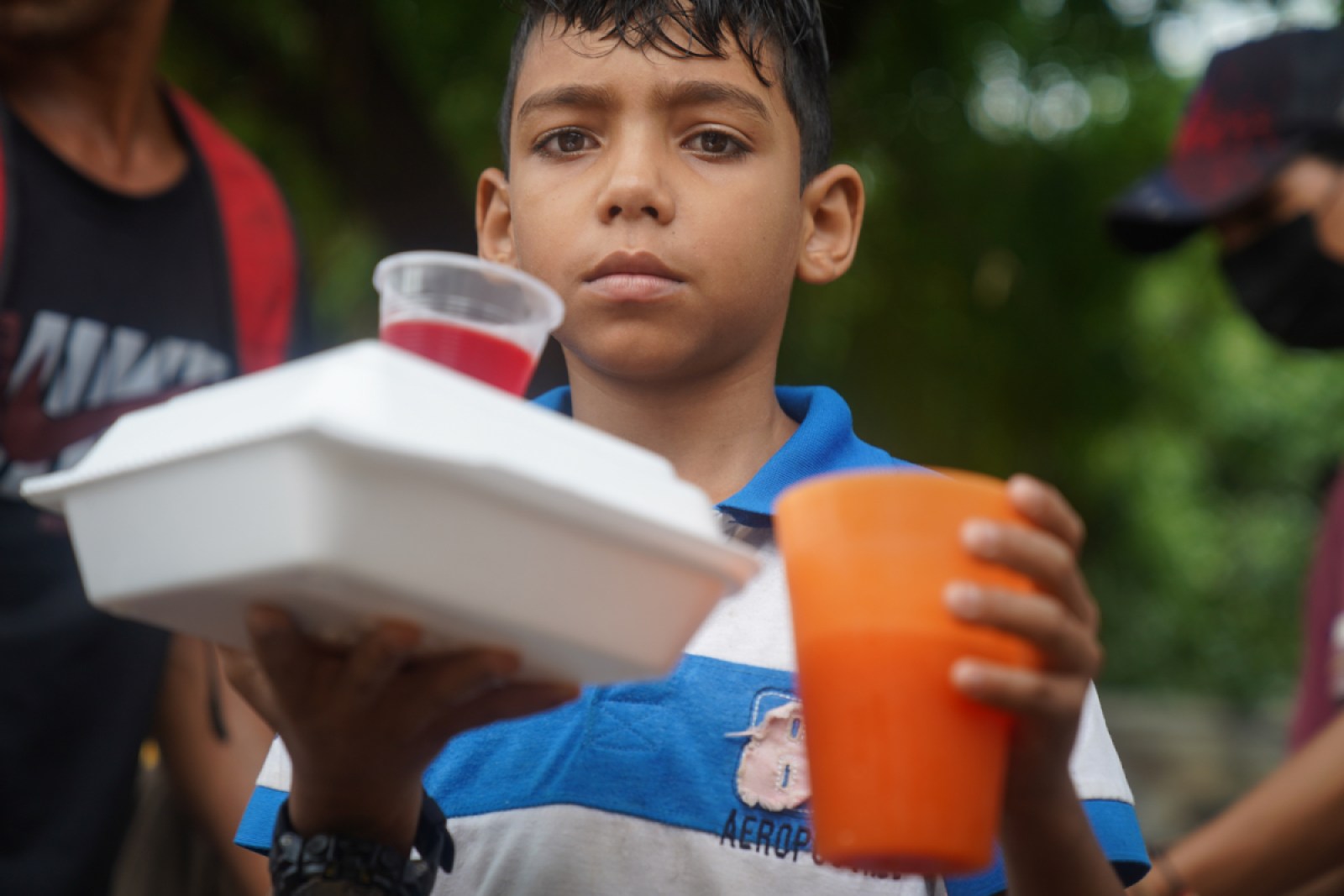
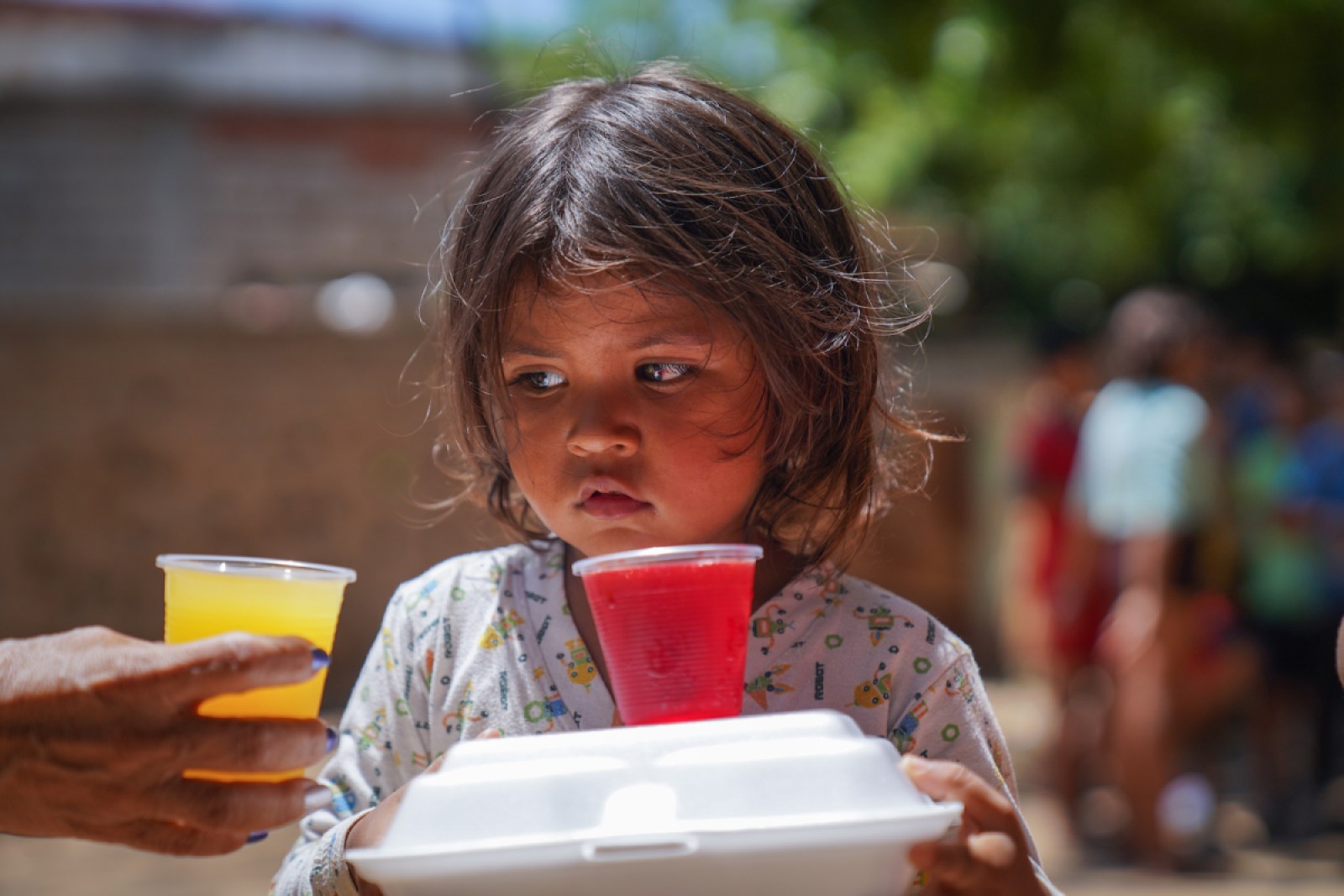
Partnering with the Neighbors
The first step in addressing serious malnutrition is to work with nutrition professionals. We had local medical specialists create a food plan, to make sure the kids get exactly what they need to help them catch up, in the form of a hot lunch five days a week.
The second step is to work out the logistics of distribution. There really was no question about who would do it in this case—together we’re equipping the same neighbors who fed the children when they had little and were helping out of love for their community. They know the children, they know their situation, and they already care for them.
The third step is to make a schedule for medical follow-up. Since it was our clinic doctors who first diagnosed these children with malnutrition, we are making sure that children get check-ups. By keeping track of the lunch program from a medical perspective, we can make tweaks as needed to ensure that every child benefits as much as possible.
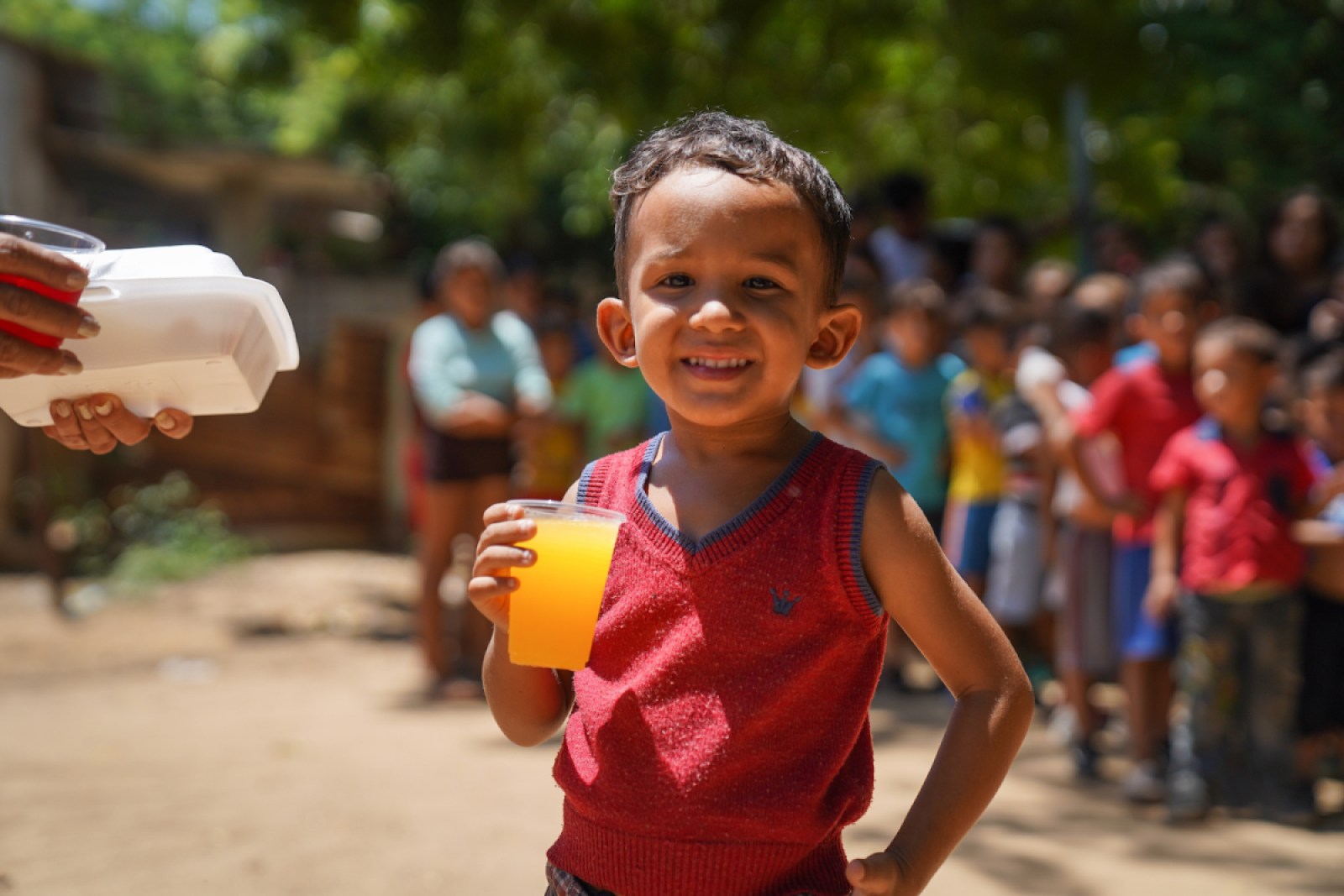
Changing the Story for Their Futures
That’s how you are helping a group of Venezuela’s hungriest kids to receive hot, nutritious meals right in their neighborhood—a part of the city that seemed forgotten by the world. Through follow-up medical checks, we’re monitoring each child’s progress and providing any additional medicines they might need to be well, including vitamins and deworming pills.
The children are serious about these lunches, but they’re also very happy.
And this is just the start. There are so many hungry kids in Venezuela, you can change their story to one filled with promise. You can put resources into more neighborhoods, so more children get the nutrition they need to thrive.

